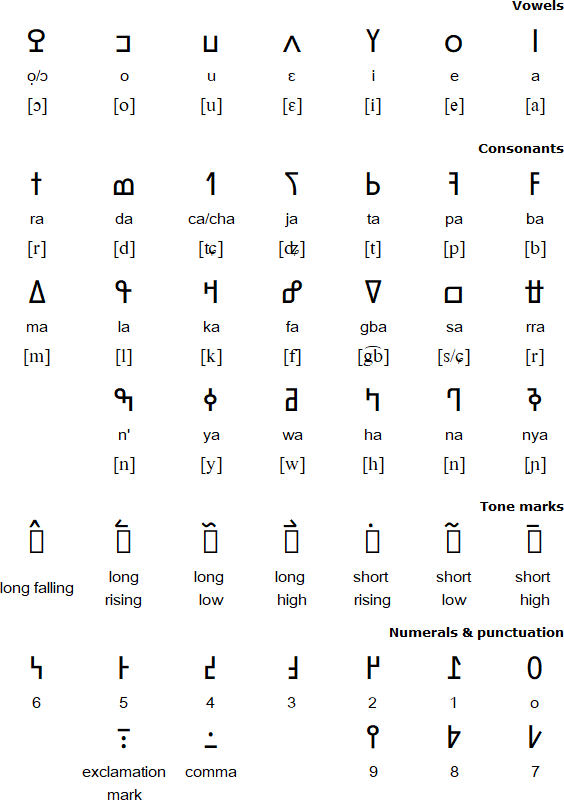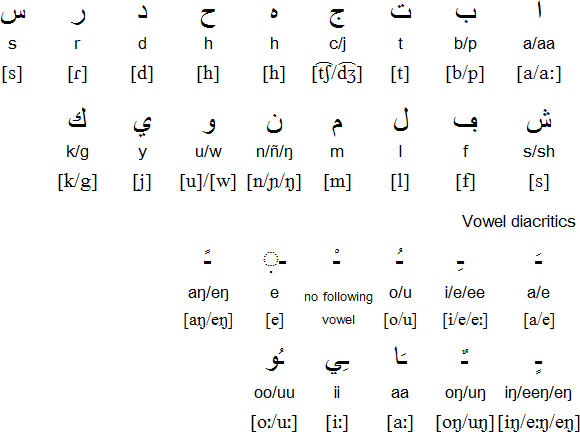N’Ko alphabet 
The N’Ko alphabet was invented by Soulemayne Kante of Kankan, Guinea,
in 1949. It is mainly used by speakers of Malinke, Bambara, Dyula and
their dialects, especially in Guinea, Mali and Ivory Coast.
Soulemayne Kante was born in 1922. As a young man, he was angered when
he read that some foreigners considered Africans cultureless since they
didn’t have an indigenous writing system. In response, he developed
Nko to give African people their own alphabet to record their cultures
and histories in their native languages. He wrote hundreds of educational
materials in Malinke using the N’ko alphabet. His aim was to explain
complex or foreign ideas to speakers of Malinke using their own language.
He wrote introductory books on subjects as diverse as astrology, economics,
history and religion. Many of his works are still available from l’Association
ICRA-N’KO.
Notable features
- Type of writing system: alphabet
- Direction of writing right to left in horizontal lines
- Diacritics placed below a vowel indicate nazalisation
- Diacritics placed over a vowel of syllabic indicate length or tone
Used to write:
Mandekan, a member of the Mande group of Niger-Congo languages
spoken by about 5 million people in Mali, Senegal, Guinea, Ivory Coast,
Burkina Faso and Sierra Leone. Mandekan, which is also known as Manding
or Mandingo, is actually a group of closely related dialects, including
Bambara and Dyula, which some linguists classify as separate languages.
Mandekan, which is also known as Mandinka, is written with the Latin and
Arabic alphabets.
N’Ko alphabet

Latin alphabet for Mandekan

Arabic alphabet for Mandekan

Links
N’Ko Institute of America
http://www.fakoli.net
N’Ko Institute – information about N’Ko language and culture in N’Ko,
English, French and Arabic (includes free N’Ko font):
http://www.nkoinstitute.com
Information about and in N’Ko
http://www.kanjamadi.com
